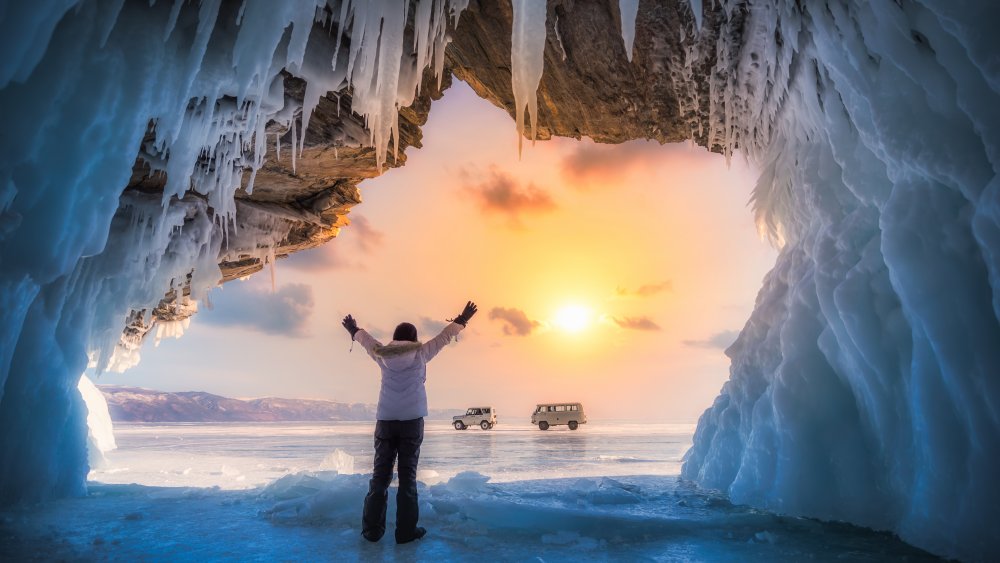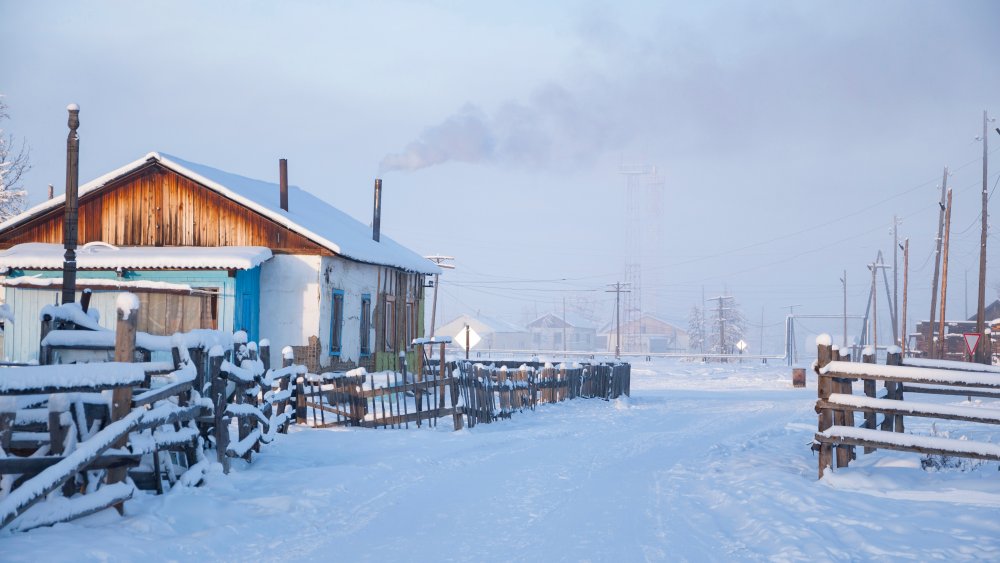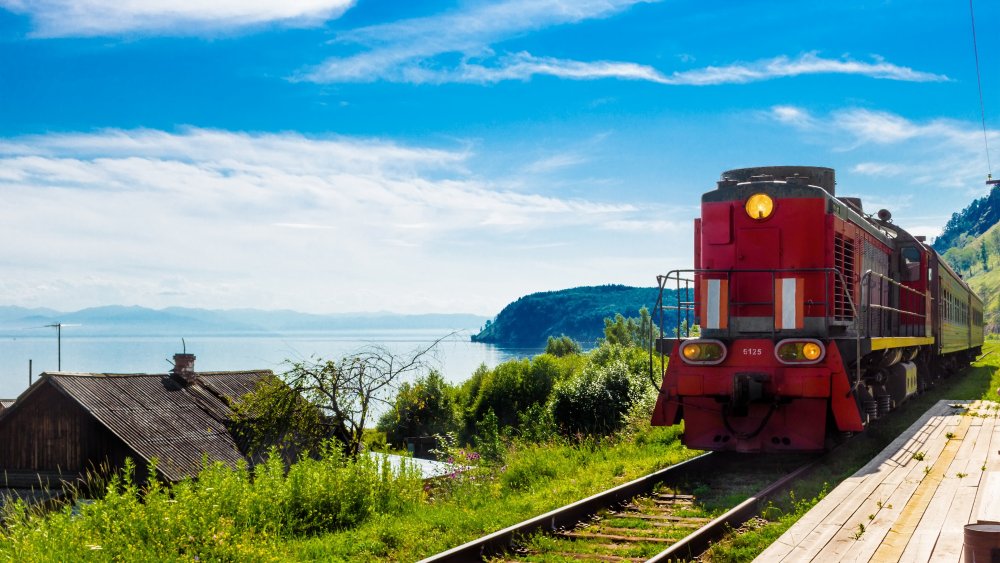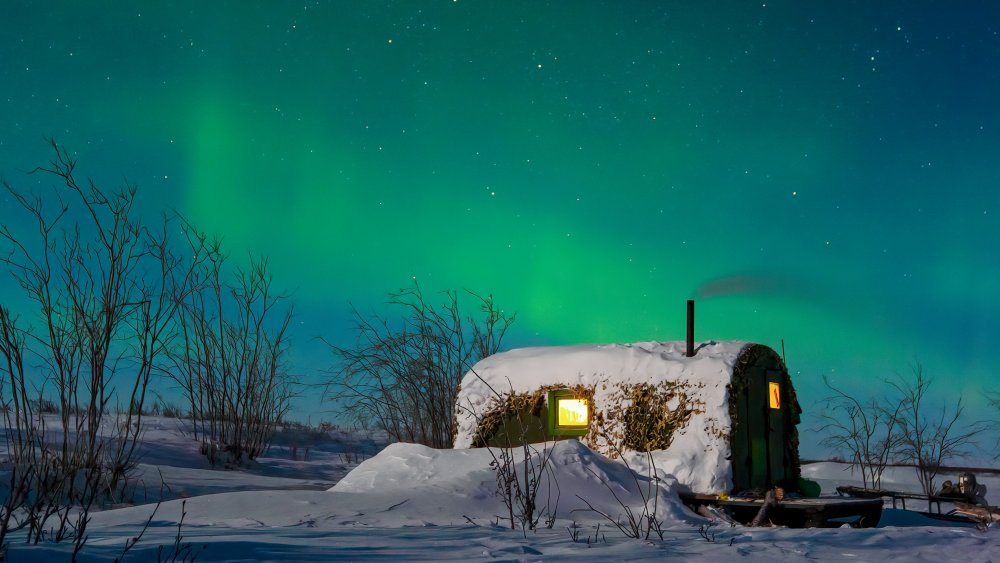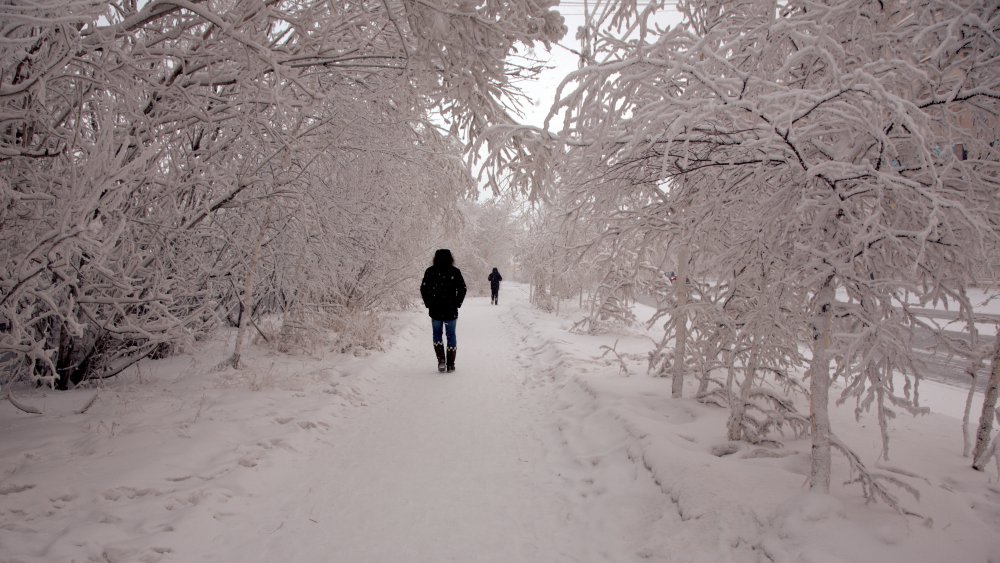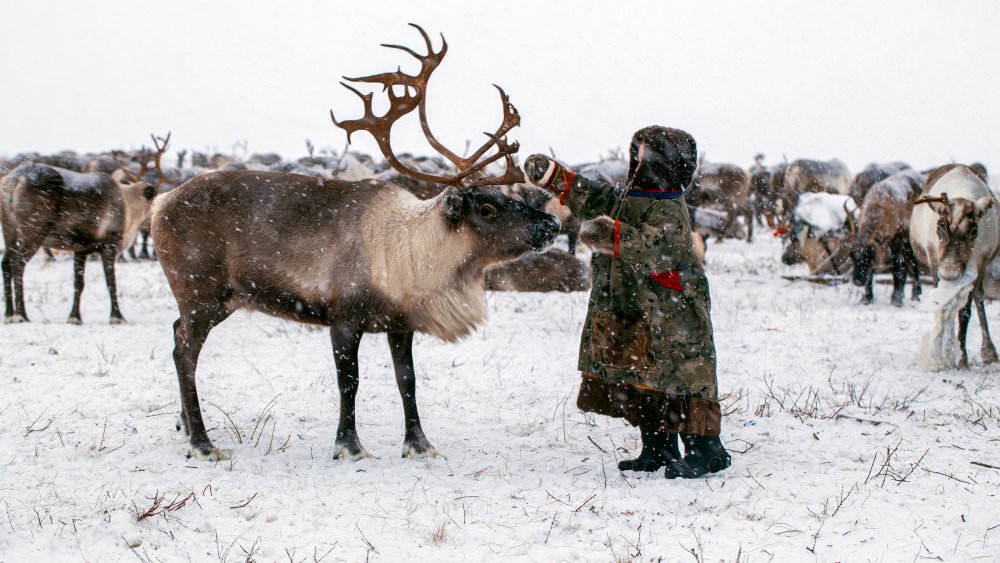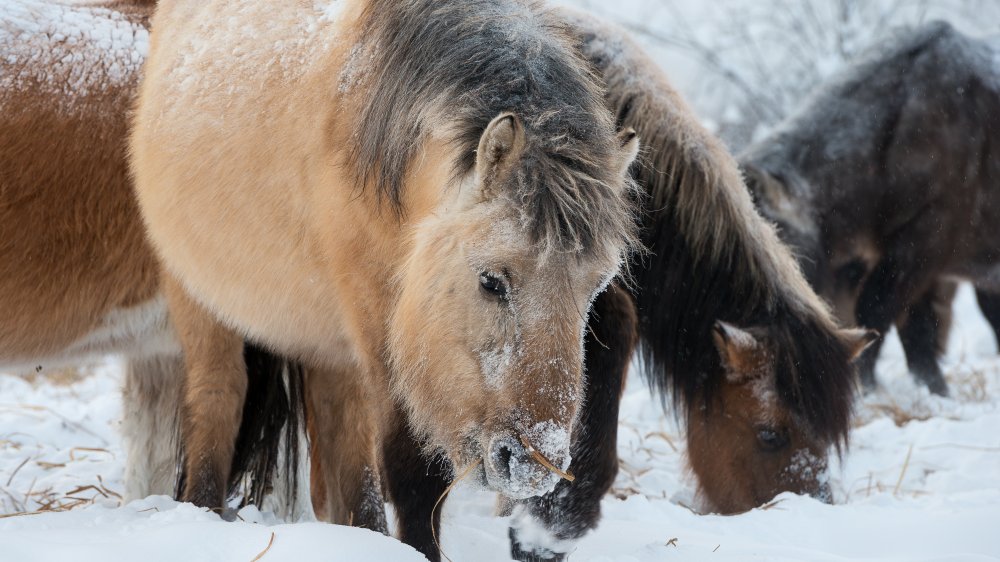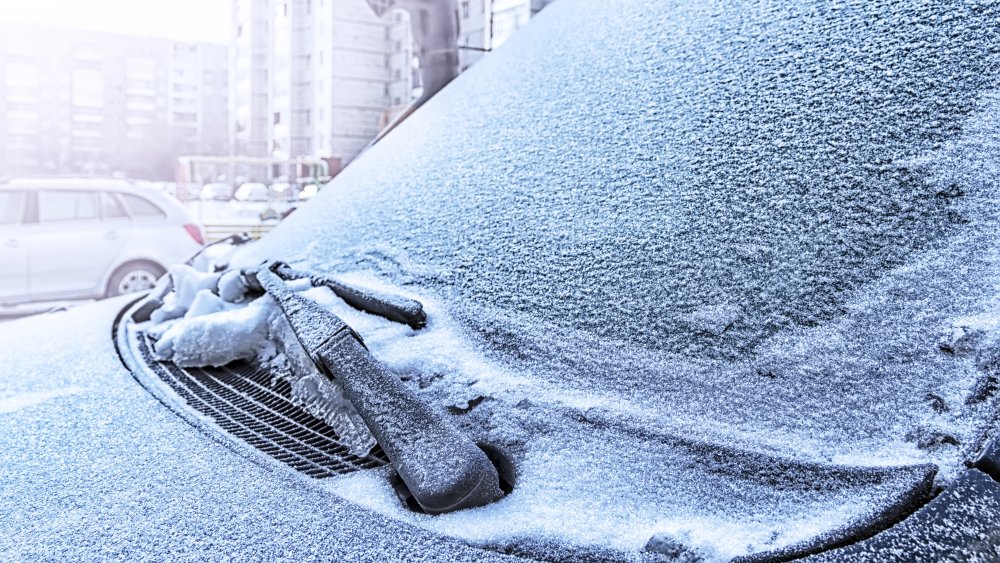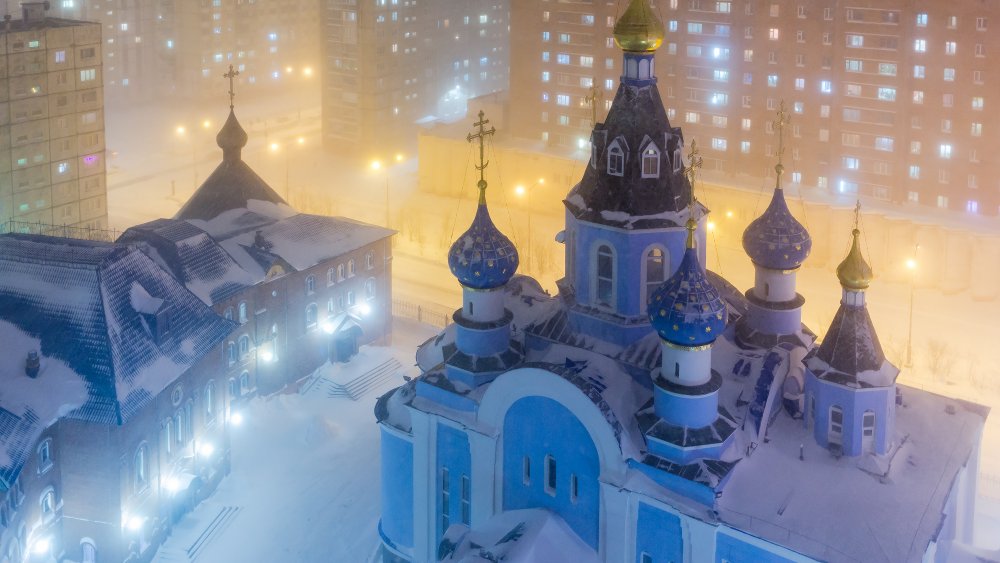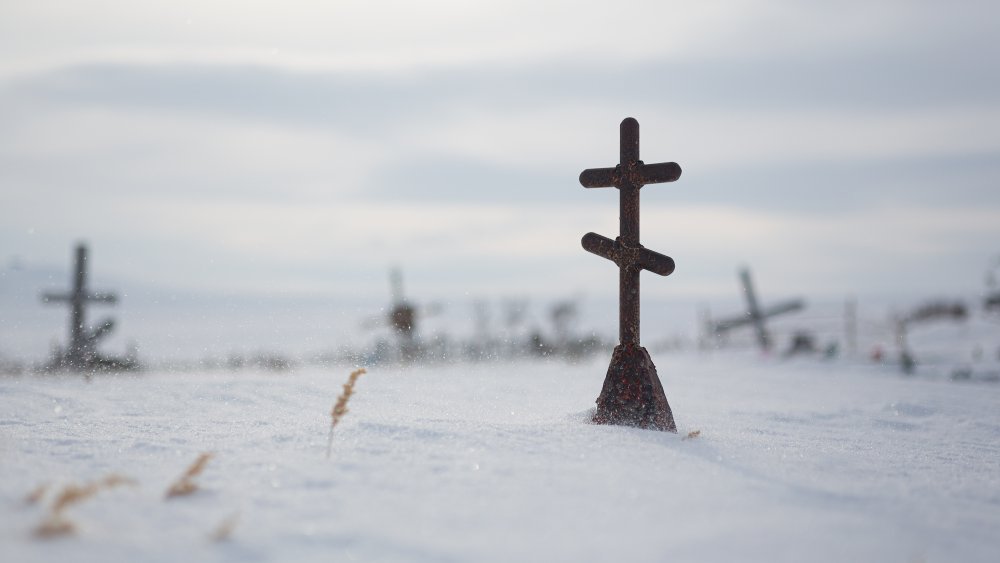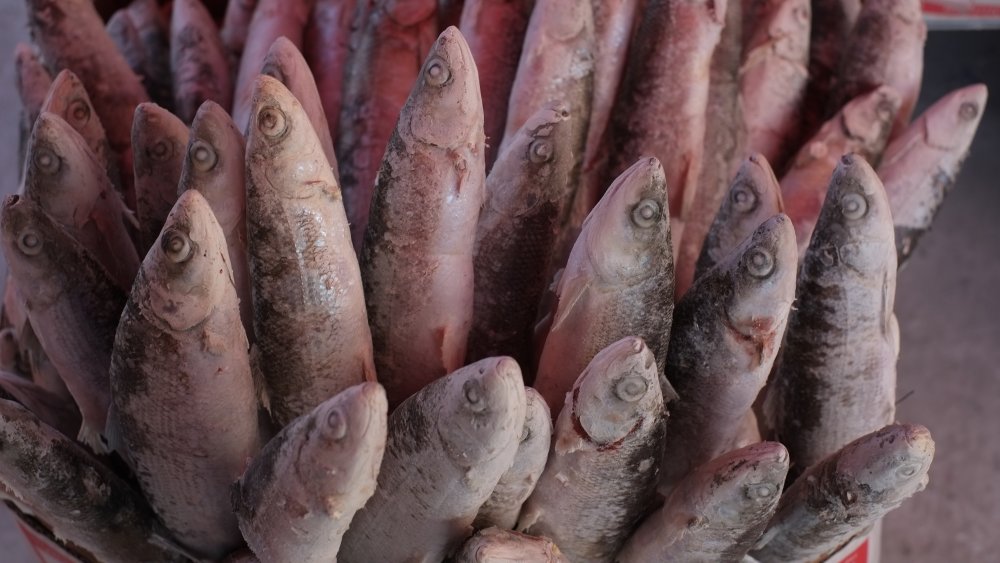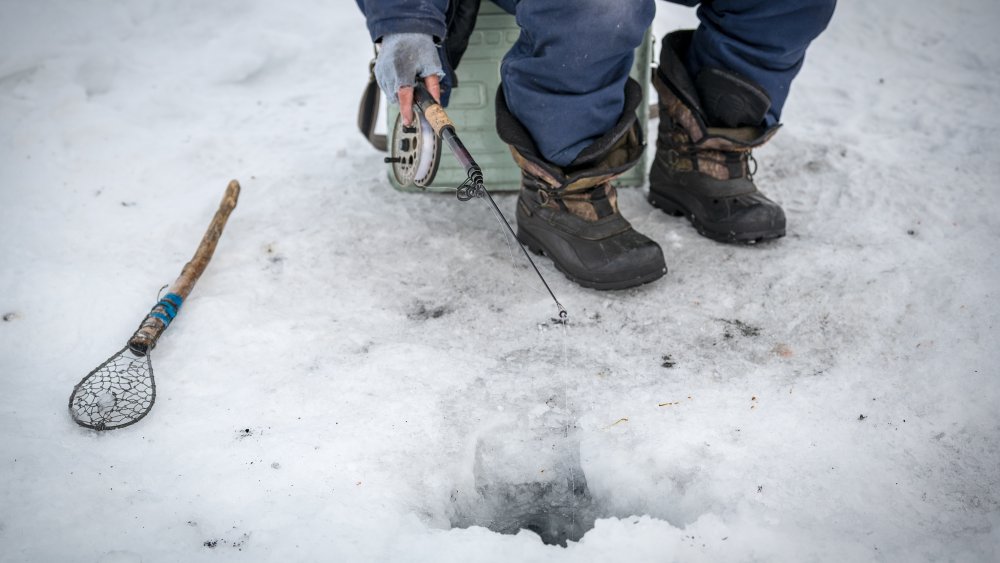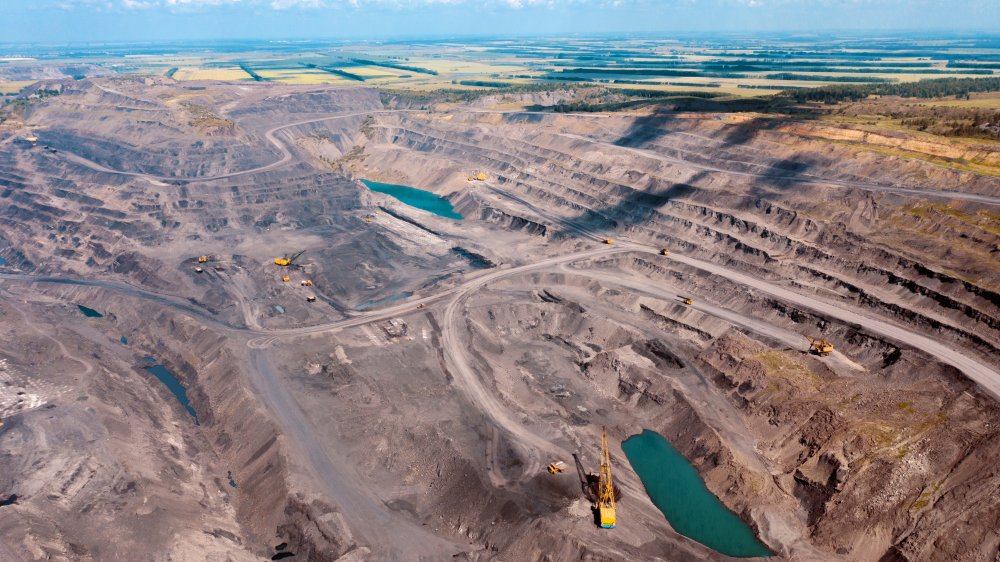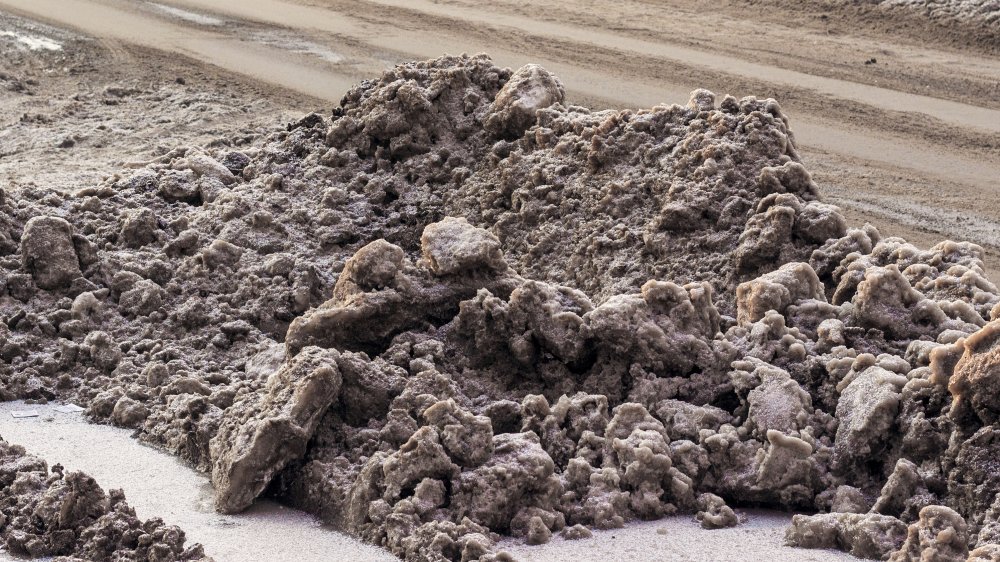What It's Really Like Living In Siberia
We'll say it right up front: Siberia is an incredible place. We hear a lot about it — usually in the same breath as words like "cold," "snow," and "dark," but there's so much more to it than that.
Siberia is vast: ExploRussia says it covers about ¾ of Russia, and it's about the same size as Canada. Still, it's home to only about 27 percent of Russia's entire population, and that population is incredibly varied. Siberia boasts some major cities — like Novosibirsk, with a population of 1.5 million — and it's also home to a number of Indigenous groups who still live in some of the same ways their ancient ancestors did.
Because the Siberian expanse is so vast, there's no single way of life there — it's as varied as any other country. There's everyone from city-dwellers who rely on public transportation like the famous Trans-Siberian Railway to nomadic groups who rely on reindeer to get around, and that's pretty cool. So, let's talk about some of the challenges those living in Siberia face on a daily basis, and the epic solutions they've come up with.
Yes, Siberia is colder than you think
Siberia has a reputation for being pretty chilly most of the time, and that's putting it mildly ... pun intended. Gizmodo says that the eastern part of Siberia is actually the coldest inhabited place on earth, and let's talk about what that means for a minute.
In the village of Oymyakon (pictured) — which has about 500 people living there — wintertime temperatures regularly hit around -40 degrees Fahrenheit. They also experience extremes, like 1933's record-setting -90 degrees Fahrenheit, and the more common -88 degrees Fahrenheit.
Let's pause for a little perspective: Space.com says that the average temperature on Mars is somewhere around -80 degrees Fahrenheit, so that makes Siberia colder sometimes.
Why on earth does it get so cold? It's a complicated series of weather patterns — like a high-pressure ridge that hovers over the area for most of the winter and pushes warm air away, and snowpack that reflects what little sunlight they do get right back away from the ground. Oymyakon is also nestled in a completely landlocked valley, and we all learned in basic science classes that warm air rises, right? The result is that part of Siberia is the coldest inhabited place on earth.
Siberia also gets shockingly hot and beautiful summers
Living in Siberia in the winter might mean cold is a way of life, but summers are an entirely different story — especially with climate change.
According to National Geographic, the summer of 2020 saw record highs — and a heatwave that scientists say will only get longer and hotter. How hot? The town of Verkhoyansk recorded temperatures that reached 100 degrees Fahrenheit, and that's the hottest since they've been keeping records, a practice they started in 1885. Climate scientist Ivana Cvijanovic of the Barcelona Supercomputing Center says, "It has been really bizarre to see," and while Siberia usually isn't this hot, the summer months still bring some relief for those who live there.
Russia Beyond says that summers bring the sort of weather that means bathing suits and sunbathing on ice beaches and glaciers ... and how cool is that? Summer lasts longer in the south, where it's possible to grow crops in the short reprieve from cold, although you're going to have to fight mosquitos on a legendary scale to do it. Even in the north, there are sunny days, but they also note that the temperature can change in a heartbeat, and true locals know that they should always carry some warm clothes, but they take full advantage of the warmth while they can.
Siberia is the land of dark and light
RBTH says that the northernmost reaches of Russia get no sun for months at a time: Dikson, a city in the Krasnoyarsk Territory, goes a full 80 days without seeing a sunrise or sunset. The phenomenon is called polar night, or sometimes — if the sun peeks above the horizon and the darkness isn't 100 percent — polar twilight. That has the potential to bring a whole new meaning to seasonal affective disorder, so how do people cope?
That's what Elena Chernyshova, a Russian photographer, wanted to know when she headed up to the Siberian city of Norilsk. There — 250 miles north of the Arctic Circle — winter lasts for nine months and the sun disappears for two of those. She found (via the BBC) that sun lamps were found in most homes, and that almost everyone filled their living spaces with plants and grow lights during those long months, too. Many homes and buildings had a solarium, a glass room that allows the maximum amount of light in, and spending time there is a necessity, not a luxury. PRI adds that work breaks are regular — and necessary — comedy is a must, and in the months before they welcome back the sun, many partake in activities like music, art, or light therapy — along with plenty of vitamin D supplements.
Here's how the Siberian cold impacts your day
When National Geographic's Steve Iuncker headed up to Yakutsk to see how the 280,000 people who lived there dealt with the deep freeze, he quickly learned he only had about a 15-minute window to take photos before his camera froze and broke. He wrote, "Here, the cold dictates everything. Or rather, it's the way your body reacts to the cold that defines your actions."
So, how do they deal with it? One of the things Iuncker noticed was that people visit each other — like, a lot. People would pop in to see neighbors who lived along their route, but visits would be just long enough to have a hot cup of tea, bundle up again, and move along. And that can be life-saving: frostbite can start to happen after just a few minutes outside, and the cold fog makes all streets look eerily similar.
Shaun Walker visited Yakutsk for the Independent and found that while layer and layers of cold were a must, those quick visits were, too: cold that felt vaguely chilly at first turned downright dangerous in minutes, and within 13 of those minutes, he described severe pain that set in throughout his entire body. While Iuncker found that locals felt the cold as much as anyone else, those Walker spoke to were baffled by the idea that such extreme cold might cause health problems.
You might depend heavily on reindeer in Siberia
Siberia is home to some major urban areas, but it's also home to groups of nomadic, Indigenous people who are still living the same sort of lives their ancestors lived for generations — Just look at the Sayan, who have been herding reindeer in a similar manner for around 2,000 years in a lifestyle that's little changed at heart.
Different groups have different relationships with their herds. When Kate Eshelby headed up to live with a family of Nenets reindeer herders, she found (via the Independent) that they travel nearly 1,300 miles each year with their herds, following a circuit to find fresh grazing land. They live in chums — huts covered by reindeer skins — and when the chums are broken down in preparation for a move, they're piled on sleighs pulled by reindeer. While reindeer meat is a major part of their diet, some are hand-reared, never killed, and treated like pets for the entirety of their lives, passing to another family when they're too old to travel.
But then, there are also groups like the Evenki. Cultural Survival says they rarely slaughter their reindeer for meat and instead use them for transportation and milk production.
You might own a Yakutian horse in Siberia
According to the BBC, there's a single sort of animal that has allowed people to survive in Siberia's Yakutian region, and that's the Yakutian horse.
They're pretty amazing: Scientists have traced their genome back to a single population that was introduced into the area about 800 years ago, and since then, they've developed the heavy winter coats, shaggy manes and tails, and sheer hardiness that it takes to thrive in temperatures that can hit -70 degrees Fahrenheit.
And locals still rely on them for a lot: HorseTalk says that there are five different sub-breeds of Yakutian horse, and not only are they vitally important when it comes to transportation across the often treacherous Siberian tundra, they're also an invaluable source of milk, hides, and meat. The Megezhekskaya breed in particular was often raised as a meat source, and even today, they're still an integral part of the Yakutian cultural landscape and economy.
Cars are ... complicated in Siberia
There are a lot of places in the world where someone might just run out, hop in the car, start it up, and drive away. Siberia's extreme cold makes that pretty much impossible.
Russia Beyond looked at just how people in Siberia deal with transportation — and namely, cars — in the winter months, and it's made even more difficult by the fact that even in major cities like Yakutsk, there's no such thing as underground, heated parking garages: the permafrost makes that impossible. Even ground-level garages are rare, so that means most people park their cars on the streets.
Some, they say, simply remove the car's battery, leave it parked until spring, and take public transportation in the meantime. Fortunately, they add that bus stops are super nice, and they're usually heated buildings complete with things like Wi-Fi, televisions, and recharging stations.
Others opt for hooking their cars up to parking heaters, which are plugged in and switched on about an hour before they'll need the car, and, well, it should start. Blankets — that cover just the engine or the entire car — are also common, but some car owners go for an even more drastic solution. They start their car in the autumn, and let it run until spring. Seriously!
Homes on stilts and permafrost concerns in Siberia
Building a typical house — like the ones you might see across the US — in Siberia just isn't an option. According to Russia Beyond, the problem is the permafrost.
Maintaining the integrity of the permafrost — a permanently frozen layer of soil and sediment — is of the utmost importance. If it's allowed to thaw, Forbes reports that it can release things like pockets of methane and other greenhouse gases — and that can result in explosions and craters.
That means the people living there have to make major concessions, like not having heated garages below or at ground level. In fact, Medium says just putting buildings on the ground can be a major problem because of the heat transference, so many are built on stilts that raise them between five and ten feet off the ground.
There are other strange concessions made, too. Playgrounds, for example, are usually built on the roof of a building, because of the difficulty in getting construction materials to survive while sitting in the chill of the permafrost. And in the summer months, there's another problem: dust. The dry air coupled with little greenery means that in order to keep dust levels down, roads need to be paved, empty space needs to be covered with gravel, and cutting down trees is strictly prohibited.
It takes days to dig a grave in Siberia
When the BBC looked into just what it takes to live in Siberia, they found that when residents die during those long winter months, digging a grave is a long, difficult process that can take days. In order to dig, they need to melt the permafrost, which they do by lighting a fire, heating coals, and then spreading those coals over the footprint of the grave. When the ground melts a bit, they rake off the coals, dig, and then repeat the process again, and again, and again ... until it's deep enough.
And it's got to be pretty deep. In 2010, The Guardian reported on something terrifying that was happening in Russian cemeteries, and it started when two women thought they saw a man in a fur coat kneeling beside a grave. It wasn't: it was a bear, eating a corpse.
It was rare, but not unheard of. Experts from the World Wildlife Fund Russia said that when food was scarce, bears would scavenge what they could — there was even one instance of a bear in Karelia who learned how to open coffins and showed others how to do it. Even when food isn't scarce, they still might see a graveyard as a sort of bear refrigerator ... so graves have to be deep.
You'd visit Yakutsk's outdoor frozen fish market
Siberia, we know, gets cold. It's the kind of cold that's difficult to imagine if you've never felt it before, and there's one fun little story that just shows how cold is cold.
While many towns might have a farmer's market in the summer, the Siberian city of Yakutsk has something different: an outdoor fish market. That's not entirely strange, but what is strange is that there's none of that distinctive fishy smell, and there's no "fresh" fish in the traditional sense of the word. It's so cold that their outdoor fish market is a frozen fish market, one where frozen, whole fish stand up straight in buckets like some strange florist's bouquets.
The Siberian Times says that yes, the sellers stand outside in that same cold for hours on end. At the time they spoke to Yakutsk local Vladimir Danilov, it was -48 degrees Fahrenheit, and he was there to buy whitefish for stroganina, which Atlas Obscura calls Siberia's answer to sashimi. It's essentially a whole fish, frozen from the moment it's pulled out of the water, then shaved into paper-thin slices. It thaws in your mouth as you eat it, and it turns out that right out in the freezing cold temperatures of the open air is the perfect place to store it.
Ice fishing is a popular pastime in the winter of Siberia
When the world outside gives you ice, what do you do? You go ice fishing! The New York Times compared ice fishing in Siberia to golf in the US, noting it was the pastime that millions of people every year would get up early for — but in Siberia, they were usually armed with a bottle of vodka and some soup.
It was -32 degrees Fahrenheit on the day they spoke to 54-year-old Igor Makharov, who gave a pretty straightforward answer when he was asked why on earth he would be standing on a frozen river trying to catch largely inedible fish through a hole: "I don't know how people live without ice fishing. If you had ever done it even once, you wouldn't have to ask such a ridiculous question."
Still, it comes with risks. That year — 1998 — 50 people had already died while ice fishing, and that was by December. Fast forward to 2020, and ITV reported that 536 people had to be rescued from an ice floe that had broken loose in the waters of eastern Siberia, and it was the third time that week emergency services had been summoned to save ice fishermen. The rescues of more than 1,400 people were made more perilous by circling polar bears, and suddenly, that sand trap doesn't look quite so scary.
You're probably reliant on the coal industry if you live in Siberia
When the BBC went to get an up-close and personal look at how people survived in Siberia, they found that many still worked the region's rich mines. The town of Oymyakon, for example, was almost entirely dependent on their mines as a source of employment. And there's a small consolation, they found, and that's the temperature. While outside could be an average of -45, inside was a balmy -15 to -20.
According to The Washington Post, there's a lot of unknowns at work in Siberia's coal mines. In 1989, miners in Siberia's Kuzbass region were so sick of the hard life — coupled with low pay and a lack of even basic things like soap — they went on strike. After two years, the movement grew to include 300,000 Siberian miners and impacted about a third of the Soviet Union's coal mines. By 1995, 500,000 were on strike over unpaid wages. And in 2002, most of the mines were sold to individual owners, meaning grievances were no longer national, and the scale of the problem was minimized — along with their news coverage.
Mining — particularly coal mining — is still a major industry. According to the Coal Action Network, 76 percent of Russia's coal exports come from Siberia's Kuzbass region (pictured).
Siberians have seen black snow
Coal mining is a massive industry in Siberia's Kuzbass region, and that means residents have had to deal with something shocking: Black snow. In 2019, The Guardian reported on some photos that the Russian media had called "post-apocalyptic," and it was an apt description of the black snows that covered the streets of towns across the region.
And it's not uncommon, as Ecodefense member Vladimir Slivyak said, "It's harder to find white snow than black snow during the winter. There is a lot of coal dust in the air all the time. When snow falls, it just becomes visible. You can't see it the rest of the year, but it is still there."
The effects are devastating. The Coal Action Network has documented the cost of regional coal mining, and it's been devastating to Indigenous people like the Shors. In the span of just seven years, their native population has declined by a shocking 50 percent, a statistic linked to a rise in illnesses like tuberculosis. Black snow is the most visible sign of the pollution that is killing the same people who depend on it for their livelihood, and according to The Telegraph, Siberia is unlikely to give up their coal industry any time soon.
